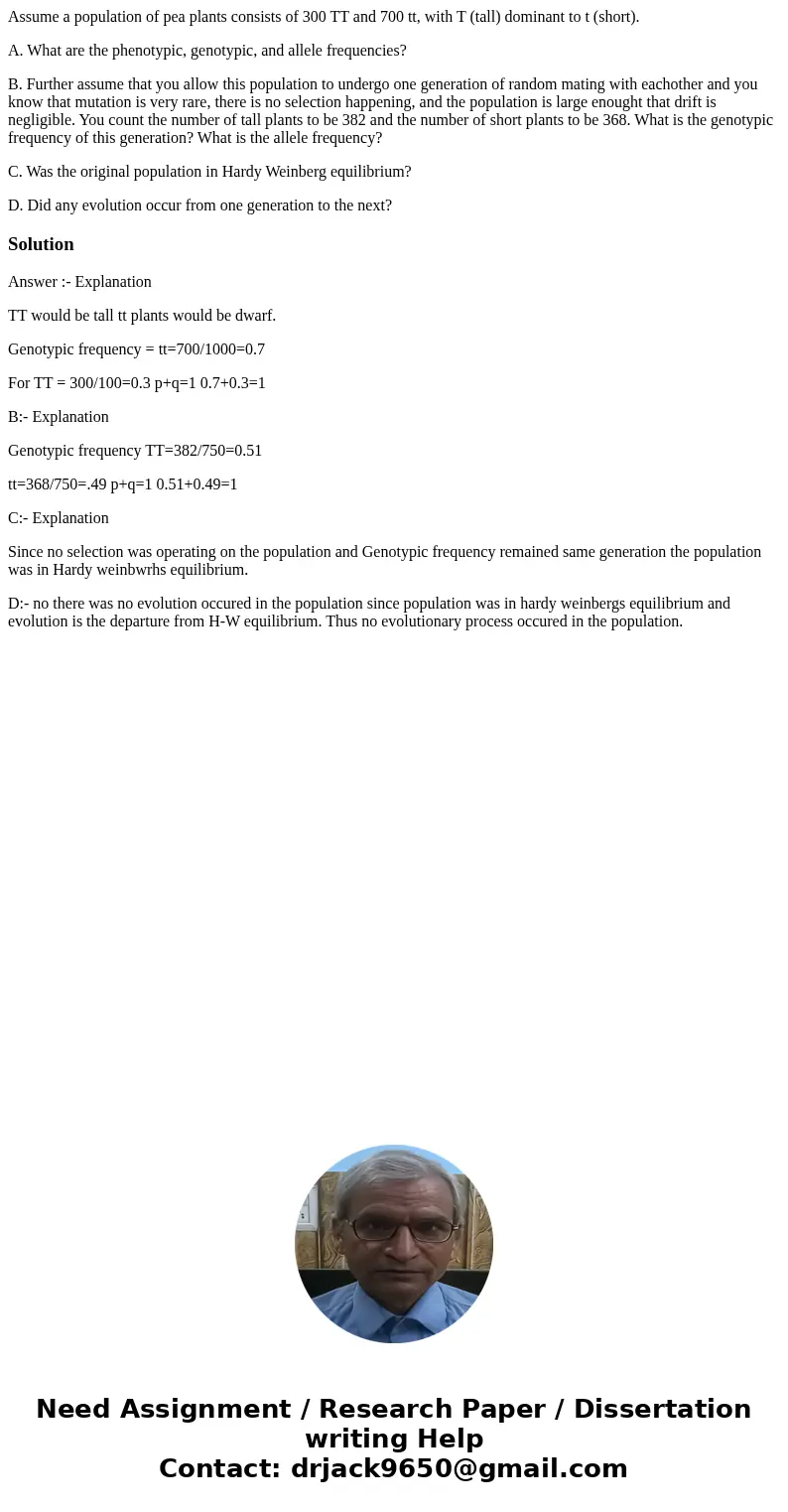Assume a population of pea plants consists of 300 TT and 700
Assume a population of pea plants consists of 300 TT and 700 tt, with T (tall) dominant to t (short).
A. What are the phenotypic, genotypic, and allele frequencies?
B. Further assume that you allow this population to undergo one generation of random mating with eachother and you know that mutation is very rare, there is no selection happening, and the population is large enought that drift is negligible. You count the number of tall plants to be 382 and the number of short plants to be 368. What is the genotypic frequency of this generation? What is the allele frequency?
C. Was the original population in Hardy Weinberg equilibrium?
D. Did any evolution occur from one generation to the next?
Solution
Answer :- Explanation
TT would be tall tt plants would be dwarf.
Genotypic frequency = tt=700/1000=0.7
For TT = 300/100=0.3 p+q=1 0.7+0.3=1
B:- Explanation
Genotypic frequency TT=382/750=0.51
tt=368/750=.49 p+q=1 0.51+0.49=1
C:- Explanation
Since no selection was operating on the population and Genotypic frequency remained same generation the population was in Hardy weinbwrhs equilibrium.
D:- no there was no evolution occured in the population since population was in hardy weinbergs equilibrium and evolution is the departure from H-W equilibrium. Thus no evolutionary process occured in the population.

 Homework Sourse
Homework Sourse